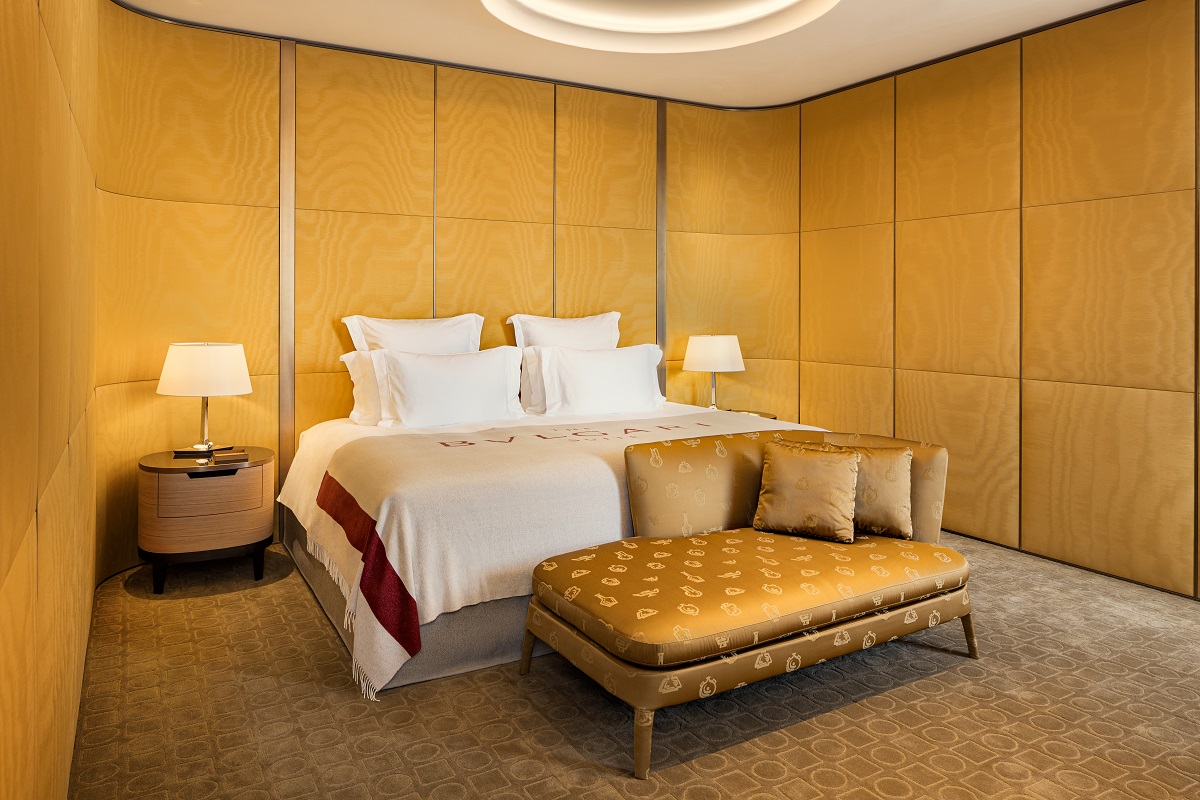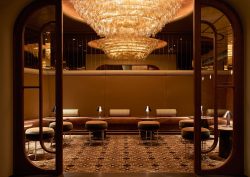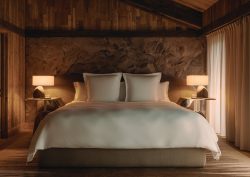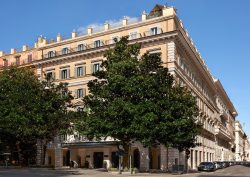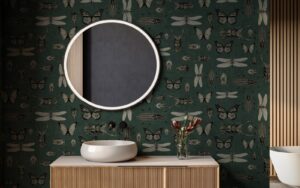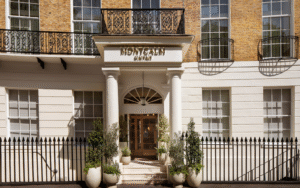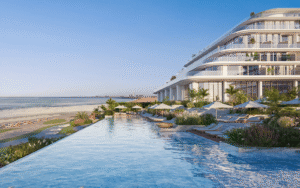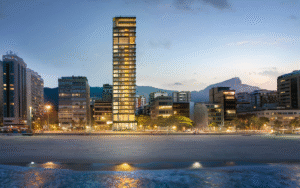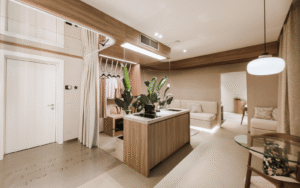Bulgari Hotel Roma, the Roman brand’s tribute to its hometown, has officially opened its doors onto the Piazza Augusto Imperatore in a landmark event on the Rome hotel scene…

Last night Bulgari unveiled its ninth and newest property, Bulgari Hotel Roma, to a select audience with an array of spectacles from live music and dance, to exceptional cuisine and a majestic drone show. The hotel is the second hotel in Italy and ninth of the jewels in the worldwide Bulgari Hotels & Resorts collection, which currently includes properties in Milan, London, Paris, Dubai, Beijing, Shanghai, Bali and Tokyo, with openings scheduled in the Maldives and Miami (2025) and Los Angeles (2026).
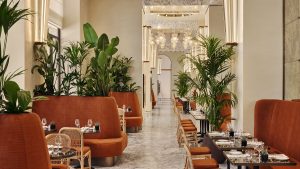
Image credit: Bulgari Hotels & Resorts
The celebrations began with Bulgari Group CEO Jean-Christophe Babin hosting a ribbon cutting ceremony in front of an original 1 B.C. statue in Pentelic marble of a seated Augustus covered with a cloak and portrayed with the traditional attributes of Jupiter welcoming the guests at the Hotel entrance – a Roman sculpture from Villa Mattei al Clelio part of the quinquennial exhibition in the Vestibolo space of five Torlonia Collections’s works recently subjected to study and restoration conducted by the Torlonia Foundation with the contribution of Bulgari.

Image credit: Bulgari Hotels & Resorts
“The Bulgari hotel in Rome is not just a new gem of the Eternal City, but a true contemporary and innovative Roman monument,” said Jean-Christophe Babin, Bulgari Group CEO. “It combines the pinnacle of hospitality and gastronomy setting a new world standard, but also a genuine cultural centre with a public library on Roman arts and architecture and unique statues from the world famous Torlonia collection such as the Emperor Augustus welcoming our guests in the entrance vestibule. The hotel offers a unique full immersion in a new luxury combining hospitality, arts and craftsmanship, pioneering a new generation of Haute Hospitalité Monuments. We are honoured to contribute to the splendour of Rome, home of Bulgari and always an inexhaustible source of inspiration for all its creations. Looking forward and epitomising the inclusive, aspirational and contemporary city of the 21st century.”
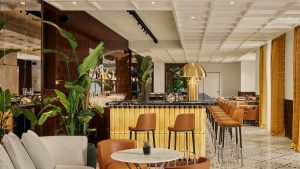
Image credit: Bulgari Hotels & Resorts
Located at number 10 in the very central Piazza Augusto Imperatore, in the Campo Marzio area, a stone’s throw from Via del Corso, the Piazza di Spagna and also the historic Bulgari store on Via Condotti, the hotel is a unique entity in the Maison’s history, because of Bulgari’s unbreakable bond with the city where it was founded nearly 140 years ago and also the opportunity it provides to express the spirit of the city, describing it with a contemporary twist. The Bulgari Hotel Roma is a celebration of the most refined qualities of Rome, reaching beyond clichés and is a showcase for the best Italian design and craftsmanship, a great heritage that is celebrated through a myriad of details.

Image credit: Bulgari Hotels & Resorts
The hotel is unquestionably the jewel in the Bulgari crown and offers the relaxed elegance of 114 luxurious guestrooms and suites. Like the hotel’s public spaces, they are designed by the Milan-based architectural studio ACPV Antonio Citterio Patricia Viel, who are responsible for the signature look of all nine Bulgari Hotels and Resorts worldwide, while the Studio Polis of Rome and architect Gennaro Farina, curated the design and supervision of the restoration works of the building, the decorative apparatus and was also involved in the urban planning.
The link between the Bulgari Hotel Roma and the vision and historical time of the emperor Augustus is guaranteed by the presence of the statue of seated Augustus. Positioned in the center of the entrance vestibule, this statue is the first in a series of five, whose restoration has been sponsored by Bulgari and which will alternate in the exhibition.
“In the Bulgari Hotel Roma we aimed to recreate the quest for beauty and sophistication,” said Patricia Viel, architect and CEO at ACPV Architects “and also the variety of tastes, origins and histories perfected in polychromatic craftsmanship and techniques, which were typical of the Augustan era.”
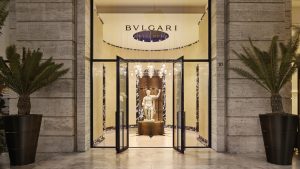
Image credit: Bulgari Hotels & Resorts
The hotel has 114 guestrooms, many of them suites. They are decorated in four different colour palettes – white, yellow, red and green – and every one of them enjoys a splendid view over Piazza Augusto Imperatore or Via della Frezza, a small street full of Roman charm. Located on the third floor, the Bulgari Suite covers 300 square metres and has a spectacular view of the Mausoleum of Augustus.
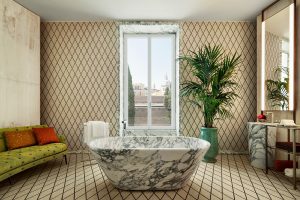
Image credit: Bulgari Hotels & Resorts
In addition, the property offers five different types of catering, all curated by the renowned chef Niko Romito. The recipient of three Michelin stars for Reale, his restaurant in Abruzzo, Romito has been in charge of all culinary experiences for Bulgari Hotels & Resorts since 2017. With its magnificent view onto Piazza Augusto Imperatore thanks to its location on the fifth floor, Il Ristorante – Niko Romito presents a menu of contemporary Italian cuisine, created exclusively for Bulgari Hotels & Resorts by the chef, in a warm and elegant atmosphere. The restaurant opens onto a large outside terrace, with a view of the historic Mausoleum of the Emperor Augustus and of the Ara Pacis. A private dining room can seat up to eight people.
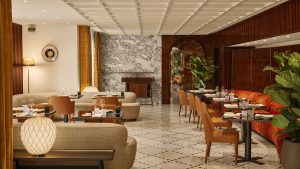
Image credit: Bulgari Hotels & Resorts
On the same floor, the Bulgari Bar is the perfect place to socialise while sipping iconic cocktails. It features a large black marble bar decorated with cones in Murano glass that reflect the light, while outside there is a large lounge terrace with its own bar area. In La Terrazza the Bulgari Hotel Roma has something that is unique: with its extraordinary rooftop position, with cabanas and lounge areas, it boasts breathtaking views of the city skyline. The landscaping of La Terrazza, which was designed by P’Arcnouveau, is that of a typical Roman terrace, with over 200 pots holding a very wide range of plants and native flowers; it is reminiscent of the ancient Roman residences such as the Villa of Livia and Hadrian’s Villa.
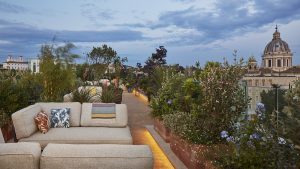
Image credit: Bulgari Hotels & Resorts
Looking onto Via della Frezza, the first Bulgari Dolci boutique in Italy delivers a luxury experience composed of delicious sweets, such as Bulgari’s celebrated ‘chocolate gems’ and a selection of traditional Italian pastries from the La Pasticceria – Niko Romito menu. Alongside the entrance foyer, with a view onto Piazza Augusto Imperatore, the Lobby Lounge is reserved for hotel guests throughout the day. It provides a refined and exclusive atmosphere, with a menu that ranges from afternoon tea to aperitif. The Bulgari Hotel Roma also houses a Library holding a collection of fine books on Roman art, design, history and architecture. This will be open not just to hotel guests but also, upon appointment, to the general public.

Image credit: Bulgari Hotels & Resorts
The hotel lounge, located to the left of the entrance foyer, is reserved for hotel guests and has a relaxed and intimate atmosphere. With a fireplace, its own bar and a private outdoor area beneath the portico, it is the perfect place for a work meeting, afternoon tea or a glass of champagne, accompanied by sweet and savoury snacks.The floor design pays tribute to the 1930s parquet of the Bulgari store in Via Condotti, and the wall is lined with large bookshelves and photos of the Dolce Vita Rome of the 50s and 60s. This room especially showcases the brilliance of Gio Ponti with a display of his beautiful trumpet vases produced by Richard Ginori between 1923 and 1933 when he took over as artistic director. Completing the décor is furniture by Maxalto, lamps by Fontana Arte and carpets by Altai.
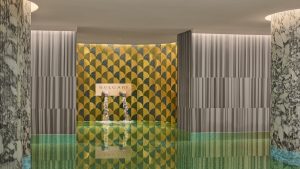
Image credit: Bulgari Hotels & Resorts
Truly a temple to wellbeing, where body, mind and spirit can find a new balance, the Bulgari Spa recreates the atmosphere and experience of the ancient Roman baths. The heart of this 1500 square metre oasis of peace is the large natatio, a 20-metre pool decorated with glistening mosaics by Bisazza, reminiscent of the motifs seen in the celebrated Baths of Caracalla, which are also a source of inspiration for Bulgari’s Divas Dream collection. Eight columns clad in ribbed arabesque marble rise up in the centre of the pool, which is fed by two bronze spouts that echo Morpurgo’s fountain and that were forged with the same lost wax technique that was used for statues in ancient Greece. The two mosaic niches contain two rare 19th century terracotta statues which represent the allegory of beauty and of silence.
Main image credit: Bulgari Hotels & Resorts






